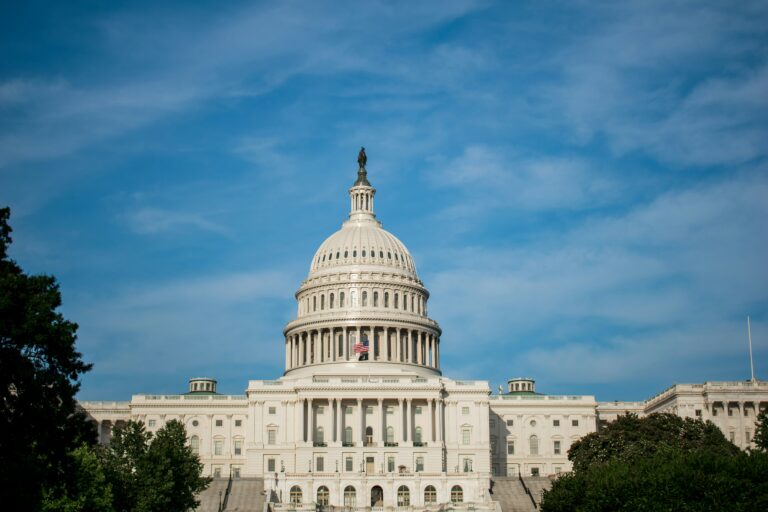
Miriam Shestack is a student at Harvard Law School.
In today’s News and Commentary: more uncertainty about the future of DACA, layoffs at General Electric, age discrimination in hiring, and how to represent workers faced with workplace monitoring technology.
On Wednesday a federal appeals court ruled that a challenge to the Deferred Action for Childhood Arrivals program (DACA), which protects certain young immigrants from deportation and provides them work permits, must go back for a new review by a lower court. Bloomberg reports that this ruling follows revisions that President Biden made to DACA this past August, which were intended to shore up the program against legal challenges.
The 5th U.S. Circuit Court of Appeals ruled that a federal district judge in Texas should review the program following the revisions adopted in August. Although the ruling by the Fifth Circuit legally strips Dreamers of their status, the appellate judges blocked immigration officials from pursuing deportation against Dreamers until the US Supreme Court makes a final ruling on DACA’s fate. The judges said they wanted to avoid prematurely causing massive disruption in the lives of Dreamers and their families, employers and communities. This ruling represents yet another step in the long legal battle to determine whether 6000,000 DACA recipients can continue to live and work in the US. Biden said in a statement on Wednesday night that he was “disappointed” by the decision. “While we will use the tools we have to allow Dreamers to live and work in the only country they know as home, it is long past time for Congress to pass permanent protections for Dreamers, including a pathway to citizenship,” Biden added.
General Electric (GE) will reduce its US onshore wind workforce by 20%, equating to hundreds of staff, Bloomberg reports. A steep drop in demand since 2020 and 2021 has driven GE to rapidly downsize its onshore wind business, which has been the top revenue source in its renewable energy division. Months of uncertainty surrounding a US tax credit designed to spur wind power installations contributed to a slowdown in orders, while inflation and labor shortages both added to the onshore wind unit’s struggles this year. Other companies in the field are also struggling to turn a profit despite growing demand for clean energy. Siemens Gamesa Renewable Energy SA last week said it planned to eliminate 2,900 jobs following a run of losses.
An overall push among companies to hire younger workers has sparked a growing number of age discrimination lawsuits. Analysis by Bloomberg suggests that firms often use coded language like “digital native” and “early career” in recruitment to target younger applicants. This kind of coded language has been found to indicate age discrimination be the EEOC. Cases brought under the Age Discrimination in Employment Act (ADEA) face a higher bar than other types of discrimination cases regarding protected characteristics thanks to a 2009 U.S. Supreme Court ruling in Gross v. FBL Financial Services Inc. , which holds that Plaintiffs must prove that age was the sole factor in their adverse treatment and not just a “motivating factor.”
The use of productivity monitoring technologies by employers continues to expand. The practice of monitoring and attempting to standardize employee productivity goes at least as far back as Fredrick Winslow Taylor’s 1911 Principles of Scientific Management. However, today, most production targets heavily involve computers collecting data and computing efficiency metrics to determine a (usually quite optimistic) “standard” time that a given task should take and monitor whether workers meet that standard. These systems raise serious issues for stewards representing workers who face discipline under computerized monitoring systems. Beyond attempting to understand how these opaque, computerized systems evaluate people, a steward must assess member feedback and decide how best to proceed with practical actions and grievances. Labor Notes has started a series about how to deal with workplace monitoring technology, beginning with this first installment focusing on grievances.





Daily News & Commentary
Start your day with our roundup of the latest labor developments. See all
April 19
Alabama and Louisiana advance anti-worker legislation; Mercedes workers in Alabama set election date; VW Chattanooga election concludes today.
April 18
Disneyland performers file petition for unionization and union elections begin at Volkswagen plant in Tennessee.
April 18
In today’s Tech@Work, a regulation-of-algorithms-in-hiring blitz: Mass. AG issues advisory clarifying how state laws apply to AI decisionmaking tools; and British union TUC launches campaign for new law to regulate the use of AI at work.
April 17
Southern governors oppose UAW organizing in their states; Florida bans local heat protections for workers; Google employees occupy company offices to protest contracts with the Israeli government
April 16
EEOC publishes final regulation implementing the Pregnant Workers Fairness Act, Volkswagen workers in Tennessee gear up for a union election, and the First Circuit revives the Whole Foods case over BLM masks.
April 15
The Supreme Court ruled in favor of bakery delivery drivers in an exemption from mandatory arbitration case; A Teamsters Local ends its 18-month strike by accepting settlement payments and agreeing to dissolve